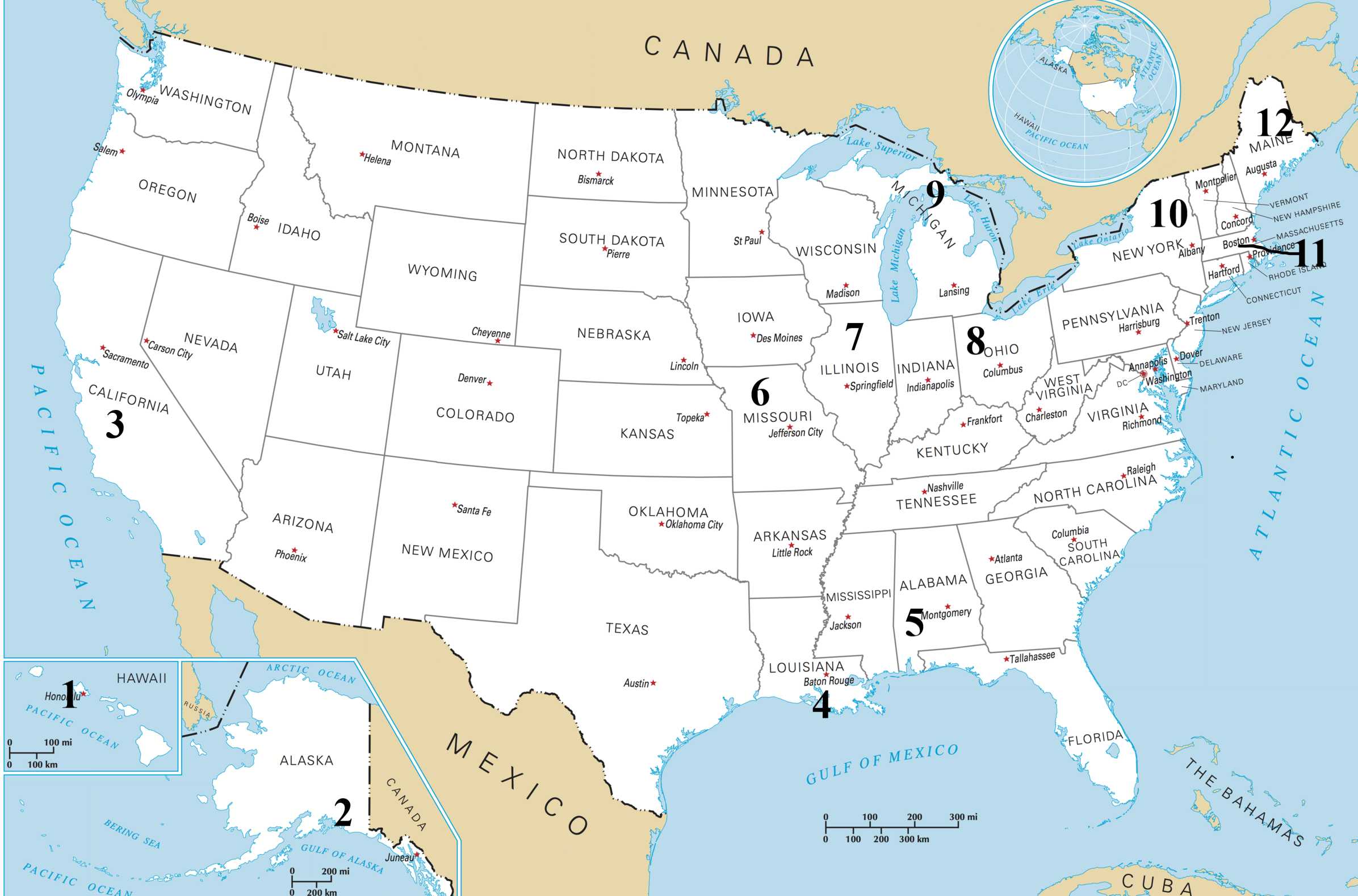
A Literary Tour of the US Trivia Quiz
In many major works of American literature the setting is as important as the story. This quiz is dedicated to twelve works that are set in different states of the Union. The one-word hints point to salient features of each of these works.
A label quiz
by LadyNym.
Estimated time: 3 mins.
